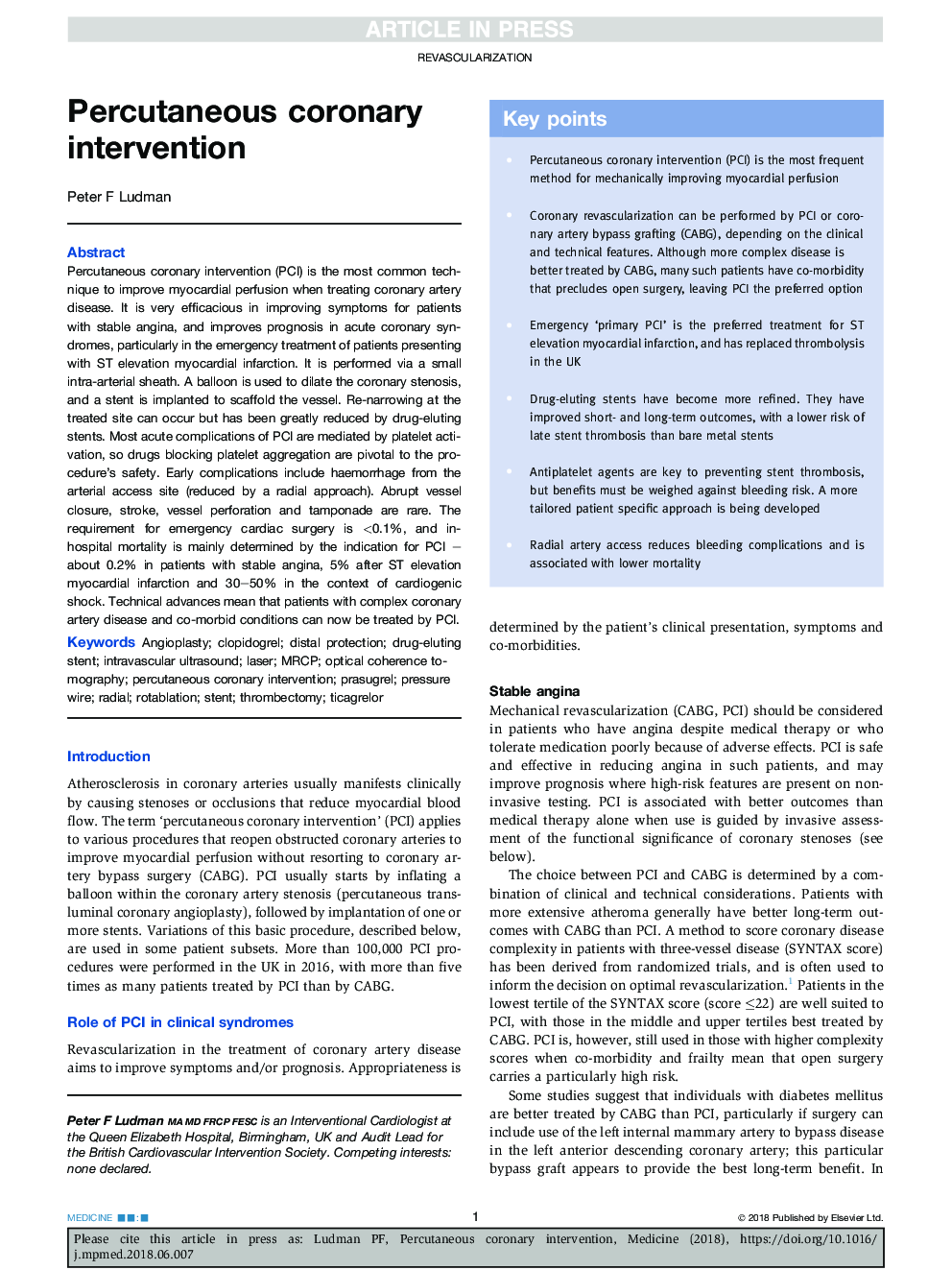| Article ID | Journal | Published Year | Pages | File Type |
|---|---|---|---|---|
| 8952302 | Medicine | 2018 | 8 Pages |
Abstract
Percutaneous coronary intervention (PCI) is the most common technique to improve myocardial perfusion when treating coronary artery disease. It is very efficacious in improving symptoms for patients with stable angina, and improves prognosis in acute coronary syndromes, particularly in the emergency treatment of patients presenting with ST elevation myocardial infarction. It is performed via a small intra-arterial sheath. A balloon is used to dilate the coronary stenosis, and a stent is implanted to scaffold the vessel. Re-narrowing at the treated site can occur but has been greatly reduced by drug-eluting stents. Most acute complications of PCI are mediated by platelet activation, so drugs blocking platelet aggregation are pivotal to the procedure's safety. Early complications include haemorrhage from the arterial access site (reduced by a radial approach). Abrupt vessel closure, stroke, vessel perforation and tamponade are rare. The requirement for emergency cardiac surgery is <0.1%, and in-hospital mortality is mainly determined by the indication for PCI - about 0.2% in patients with stable angina, 5% after ST elevation myocardial infarction and 30-50% in the context of cardiogenic shock. Technical advances mean that patients with complex coronary artery disease and co-morbid conditions can now be treated by PCI.
Keywords
Related Topics
Health Sciences
Medicine and Dentistry
Medicine and Dentistry (General)
Authors
Peter F. Ludman,
